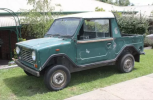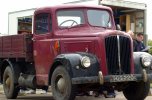History of Morris Commercial Cars
E.G. Wrigley & Co supplied axles and steering sets to W.R.M. Motors Ltd., (the forerunner of Morris Motors Ltd), between 1913 and 1917 for the 10hp, ‘White & Poppe’ engined Morris Oxford.
Morris Commercial Cars Ltd. registered February 1924, registered office Foundry Lane, Soho, Birmingham. William Morris acquired factory/site from receivers of E. G. Wrigley & Co Ltd., (which had occupied site since 1902).
1924 – 1 ton truck production commenced. Within 8 years, 15 different types of vehicles were in production at Foundry Lane, ranging from 10cwts to 50cwts, many of which were powered by the company’s own engines.
1932 Morris Commercial Cars Ltd. moved to former Wolseley works at Adderley Park. First double-deck bus – the Imperial was produced here. ‘C’ type range of commercial vehicles announced in 1933. Was very successful, but by 1937 has become a little dated. Pressed steel bodied advances lead to the Equi-load range going into production.
War years – Adderley Park factory worked supporting war effort, producing military vehicles, tanks, gun platforms, and transmission units for torpedoes and anti-submarine weapons. They also made components for Rolls-Royce Merlin and Griffin aero engines.
Post-war – 1949: MCC introduced FV type and J-type van – a type much favoured by the GPO.
1952 Morris Motors merged with Austin Motor Co., and for a short period there was no outward change. Then equi-load range discontinued, and replaced in updated in the form by LC5 and NV types. LD range of vans and ambulances, using the well-known (ex-Austin) BMC 2.2 litre 4cylinder petrol engine, produced extensively.
1954 – 1963: MCC-designed OE diesel engines were made at Adderley Park These successfully powered many Austin/Morris trucks and Nuffield tractors.
1968 – Distinction between Morris and Austin commercial vehicles ceased, production now being labelled BMC. Thus ended the era of Morris Commercial vehicles. Total number of vehicle types produced was an incredible eighty-five.
1974 – Adderley Park factory closed, and remnant production facilities were moved to former Tractors & Transmissions (Wolseley works) at Drews Lane. This site eventually became LDV vans. (And we all know what happened to them!!)
1963 – 1986: Larger truck and diesel engine production was re-located to recently-opened plant, near Bathgate, Scotland.









